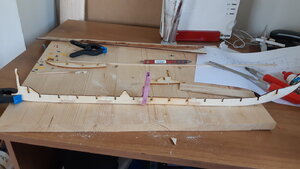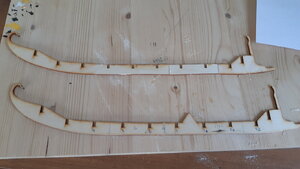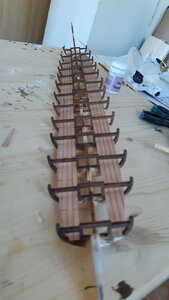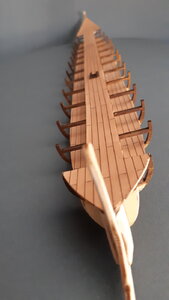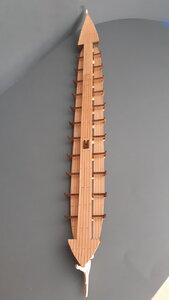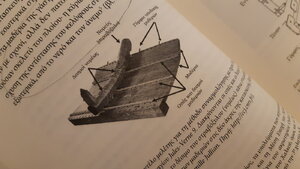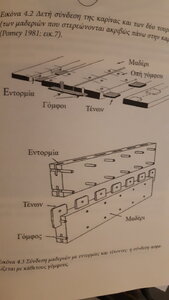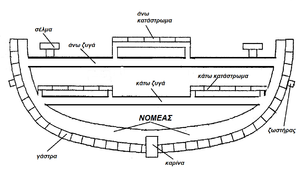Therefor the sources available are Homer’s works, Iliad ana Odyssey, the ancient vases of Homer’s life time, that is the time from the 8th to the 7th century bc and lastly the archaeological findings from the ship wrecks. Although is common knowledge that Homer’s epics refer to the Trojan war, that according to Heinrich Schliemann findings are dated in the 13th to the 12th century bc., Homer’s naval references correspond the naval reality of his life time.
Out of a study of the above topics, I came to the conclusion (and I am not the first to do so) that Odysseus ship was a πεντηκόντορος, a penteconter. It had, as also her Greek name designates, 50 oars. That is 25 in each side. It also had a single mast with a single square sail. It was a very long boat, hence this type of ship, even the smaller ones with 30 or 20 oars, were described as long vessels (νῆες μακραί, nḗes makraí ).
For the reconstruction project, of building Odysseus ship, I got two model ship kits from Dusek, that is the Greek bireme, in order to use/merge their elements and to by pass trivial work, which is supplied by the kits.
Christos
Out of a study of the above topics, I came to the conclusion (and I am not the first to do so) that Odysseus ship was a πεντηκόντορος, a penteconter. It had, as also her Greek name designates, 50 oars. That is 25 in each side. It also had a single mast with a single square sail. It was a very long boat, hence this type of ship, even the smaller ones with 30 or 20 oars, were described as long vessels (νῆες μακραί, nḗes makraí ).
For the reconstruction project, of building Odysseus ship, I got two model ship kits from Dusek, that is the Greek bireme, in order to use/merge their elements and to by pass trivial work, which is supplied by the kits.
Christos



